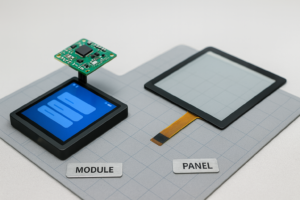OLED displays have become increasingly popular due to their vibrant colors and energy efficiency.
Unlock the potential of organic light-emitting diode (OLED) technology, renowned for its exceptional picture quality and versatility. In this article, we will explore how OLEDs function, their applications across different sectors, and the industries that can fully leverage their capabilities.
Table of Contents
- Applications of OLED Displays in Consumer Electronics
- OLED Displays in the Medical Field
- OLED Displays in the Advertising Industry
- Innovative Applications of OLED Displays in Portable Devices
- Impact of OLED Displays on the Entertainment Industry
How OLED Technology Works
OLEDs consist of pixels made from organic light-emitting diodes. These diodes are formed by multiple layers of organic molecules sandwiched between two electrodes. When an electric current is applied, electrons combine with holes in the organic molecules, releasing energy in the form of photons, resulting in stunning visuals.
Applications of OLED Technology in Consumer Electronics
High-end smartphones utilize OLED technology for superior picture quality, vibrant colors, deep blacks, and wide viewing angles. These screens are thinner than traditional LCDs and offer longer battery life. According to Counterpoint Research, nearly 50% of smartphones sold in 2023 will feature this advanced technology.
OLED televisions provide an exceptional viewing experience with pure colors, high contrast, and fast response times. Leading brands like LG, Sony, and Panasonic have embraced OLED technology in their premium models.
Flexible and curved OLED screens are paving the way for innovations in smartwatches and virtual reality glasses, providing low power consumption for devices with limited battery life.
OLED Solutions in the Medical Field
The potential applications of OLED technology in healthcare are vast. They can clearly display results from CT scans, MRIs, and X-rays, and are widely used in operating rooms, advancing medical informatics.
Medical OLED displays allow multiple professionals to view images from different angles more easily. They also play a crucial role in portable medical devices, such as vital sign monitors and dynamic ECG monitors.
OLEDs in the Advertising Industry
OLED screens are transforming marketing by delivering exceptional quality that captures the public’s attention. They can be installed in tight spaces, walls, and store windows, maximizing visibility without consuming excessive space.
The flexibility of OLED technology in marketing offers endless possibilities for creating eye-catching advertisements in malls and events, while their low energy consumption leads to significant cost savings.
Innovative Uses of OLED Technology in Portable Devices
Due to their superior picture quality, manufacturers are integrating OLED screens into consumer electronics. This technology has led to the emergence of foldable phones, such as the Samsung Galaxy Z Fold and Huawei Mate X.
Smartwatches and virtual reality glasses benefit from OLED technology due to their slim profile, including popular models like the Apple Watch and Oculus Rift. Many high-end digital cameras also use OLED electronic viewfinders.
Impact of OLED Screens on the Entertainment Industry
The application of OLED technology in entertainment offers high contrast and vivid, lifelike images. Each pixel can emit its own light, allowing for precise control over brightness and color.
OLED displays maintain vibrant colors even from extreme angles, featuring low response times and high refresh rates. These characteristics give gamers a competitive edge by reducing motion blur and enhancing the gaming experience.
Conclusion
OLED technology is revolutionizing various industries with its superior capabilities. From consumer electronics to healthcare, advertising, portable devices, and entertainment, the applications are vast and impactful.
📞 Contact uCONTACT USs today to learn more about how OLED technology can transform your business and drive success!
.png)



